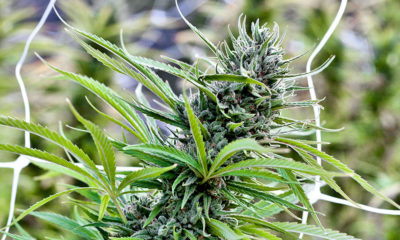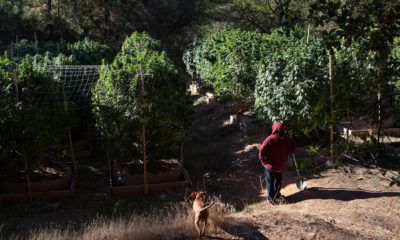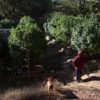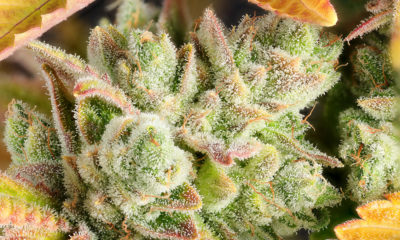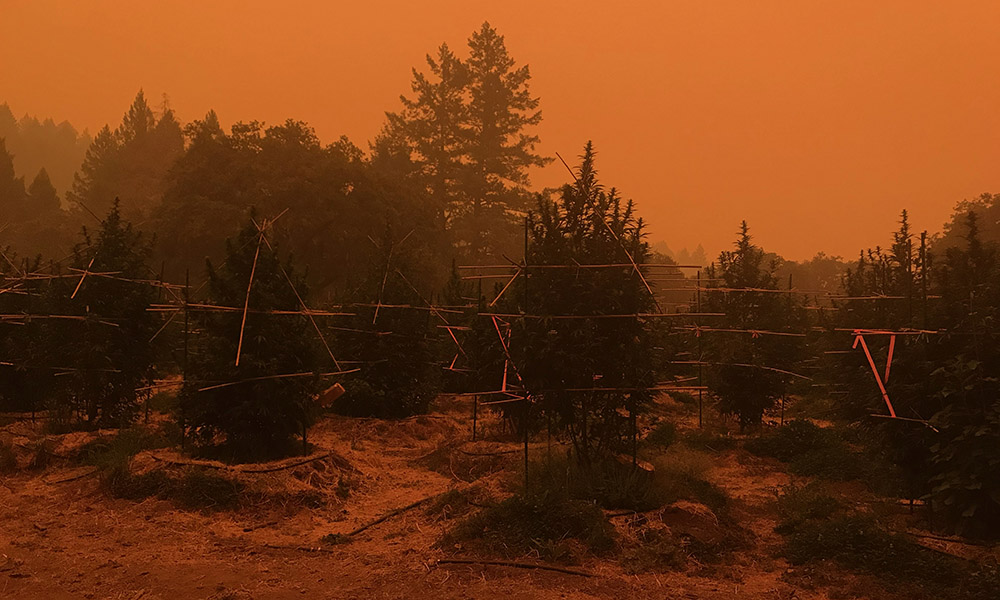
Grow
How to Fireproof Your Cannabis Farm and Other Fire Safety Tips
Swami Chaitanya of Swami Select shares many important tips on how to prepare a cannabis farm for fire season.
Up here in the Mendocino Highlands we had another wildfire scare last week. The Bell Fire was just about four miles away from our ranch, at the bottom of the hill off Highway 101. Thanks to the immediate response of our Bell Springs Fire Brigade and the nearby CalFire station (plus a few helicopters and planes), it was contained rapidly and only burned 50 acres. Everyone living on the many properties in the surrounding area were evacuated in a hurry. This was not only a close call, but a warning.
Last year we also had more close calls. Two fires were about 15 miles away, one to the south east and another to the north east. Depending on wind speed and direction, 15 miles is not very far away. At one point we had to evacuate for three days due to a shift of the winds toward us, plus the intensity and density of the smoke. The sky at midday was a mixture of orange and black with white ashes falling like snow. It truly looked like hell on earth.
We have been thinking about fire preparedness for several years, as this is now the new unfortunate reality we live in. Hopefully these practices can help others avoid disaster.
Preparing a Property for Fire Prevention
First off, CalFire has a list of recommendations that apply to all properties:
- Clear a 100 feet “defensible space” around all structures, including combustable materials leaning against or under the house.
- Trim and prune tree limbs and branches to at least five feet above ground to break the “fire ladder” of combustible material. Trim higher the closer they are to structures.
- Clean out gutters regularly.
- Mow your grassy areas, preferably in late spring, but if you do it later be careful of sparks from the mower blades. Or bring in goats to eat your grasses.
- Have water hoses at hand.
- Keep numerous fire extinguishers charged up to date, at least one per structure.
- Make sure the address numbers to the property are large and posted at every turnoff along entrance roads, so firefighters can find your place.
- Have emergency evacuation essentials packed, including animal carriers.
- Have a plan for farm animals.
Beyond taking care of all of the above there are a number of things the savvy cannabis farmer can do.

Fire Prevention for the Cannabis Farm
It is a good idea to clean up fallen branches and leaves when mowing the meadow and pruning the trees. All of the branches can then be put through a wood chipper and set aside to weather through the winter. This pile can then be mixed with the leaves, grass cuttings and other compost and applied as top dressing to the cannabis beds in the springtime after it composts for a while.
Consider automating the drip irrigation system. Or if there is not a drip system, this is a good excuse to install one. It is not that difficult to place timers and solenoids on each branch of the system and the main supply line. Then, if an evacuation mandate comes, the timers will continue watering the crop.
Inspect any electrical supply lines and fixtures for frayed wires, proper fuses and system grounding. Install smoke detectors in buildings that are in use.
Properly store petroleum products and other combustable liquids away from structures to prevent burning embers from causing an explosion.
If possible, connect your own “mini-fire hydrant” to your water system with at least 6000 pressurized gallons of available water, and keep the water tanks full. We have a 1½ inch fire hose and just installed an adapter for the CalFire 2½ inch fire hose.
Plot out an alternate escape route if you live at the end of the road and the fire cuts off that exit. Clear fallen limbs and excess brush along the exit road.
When visitors arrive at the ranch, be aware that hot vehicle engines can start fires if the cars are parked in a field with tall grasses.
To mitigate accidental fires, we have a rule that you do not walk and smoke. Cannabis or tobacco, joint, bong or bowl – if you smoke – stop, sit down, use an ashtray, relax and be mindful.
What If You Have to Evacuate?
If evacuation is required, there is an emergency clause in the California cannabis regulations and Metrc guidelines whereby cannabis can be evacuated with emergency documentation by a licensed distributor. However, time is often of the essence. Therefore, the California Department of Food and Agriculture (CDFA) allows licensees to transport their own cannabis off the premises if they give 24 hours notice and take the plants to a secured location with restricted access. However, each county may have specific requirements, so be sure to check in about this before a fire comes near.
One idea we stumbled upon in our fire-prevention research led us to buy a small trailer and outfit it with: a 200 gallon water tank, a gasoline transfer pump and a 1½ inch fire hose. We now have a “first response” fire trailer. This doubles as a way to bring compost tea to our second garden site, and triples as a way to spray water on the dirt road next to the garden for dust suppression. We performed fire drills for the crew to learn how to use the equipment.
Having a fire alarm signal audible to everyone on the farm and talking about fire awareness with all team members is crucial. On very smoky days with air quality over 100 AQI, everyone should use particle filtration masks, avoid strenuous tasks and long exposure to smoke – inhaling even light smoke is not healthy. We have invested in some 3M 7502 respirators which cover half the face and allow for easy breathing.

Preserving the Crop
If you are spared an evacuation there is still work to be done for the crop. If a lot of ash has fallen on the plants, a leaf blower is the first step in protecting the girls from harm. Clear water can be sprayed on the leaf tops and backs. This will rinse off the ashes without making a lye paste – which some feared might happen during last year’s fire season. A water spray rinse will help open the stomata on the underside of the leaves, facilitating better plant “breathing.”
Last year, the worst smoke for us was in September. During harvest, just to be safe, right as we cut the plants and weighed them, we dunked each separate branch in a 55 gallon drum filled with diluted hydrogen peroxide. Then each branch was rinsed in a 55 gallon drum of clean water, changing the water after every four plants. None of the cultivars smelled of fire or tested for any contaminants.
These are some of the things to do to be prepared for an emergency. It has the benefit of keeping you occupied and taking your mind off the anxiety everyone feels during fire season. It’s not just about the house, your pets and all your possessions. It’s about the crop, the girls and the very way of life that has sustained us for many years.
Be safe! Be prepared! And may the Fire Gods spare us.












